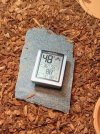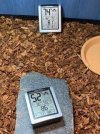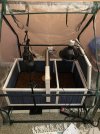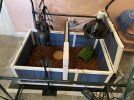Tinytortmama
Member
We are working on getting her enclosure set up and getting the humidity and temps right before we get her. We have a 65W flood basking bulb, an Arcadia T5 for UVB, and a 5000K bulb. Inside the greenhouse upon initial setup, after adjusting the heights of the lights, temps were holding at 81 degrees NOT under the basking bulb, and 88 under the basking bulb with humidity between 48-55%. Does all this sound good or does humidity need to be even more? I have not misted the bark, so I assume that will help. We have two 5.5" clay saucers for feeding and water, and a hide is on the way. Do I need more substrate? The basking bulb stays on 12 hours a day and the UVB 15 minutes a day. How about the 5000k bulb?




